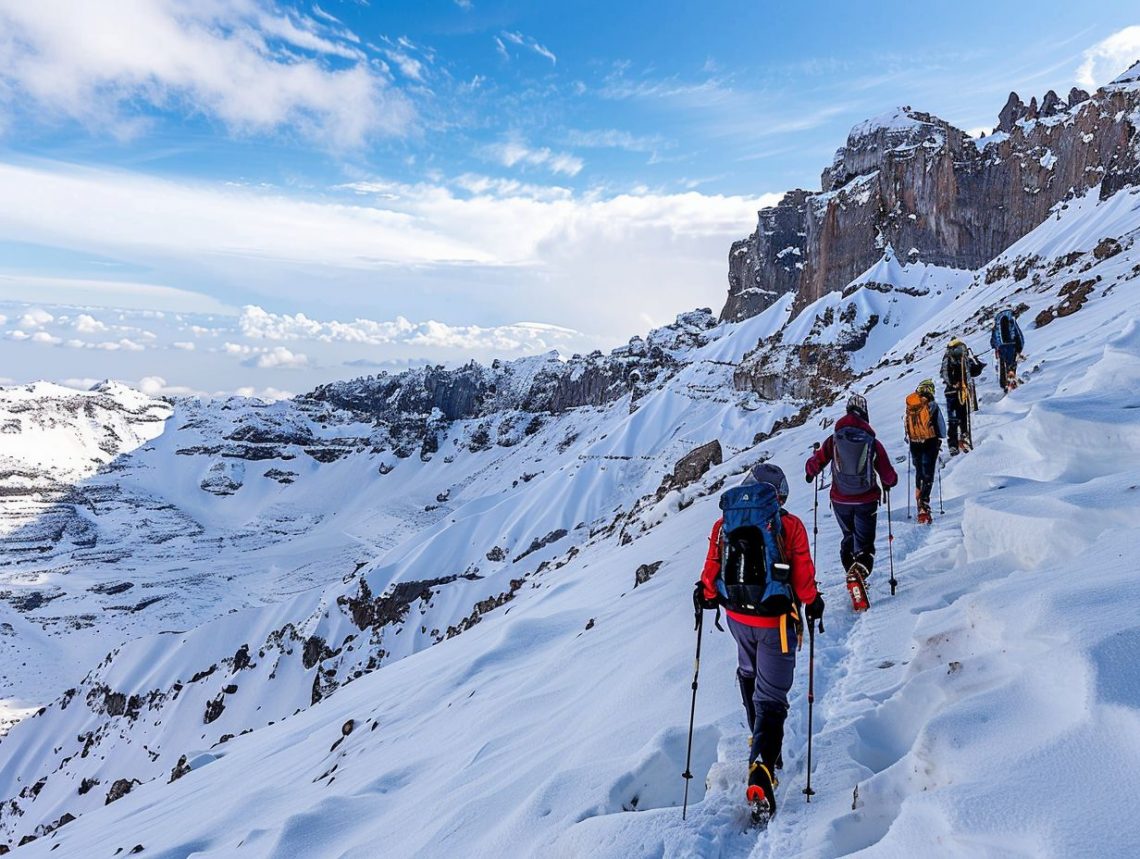
How Fit Do You Need To Be To Climb Kilimanjaro
Are you considering climbing Mount Kilimanjaro but unsure about the physical demands and preparation required?
We will explore what Kilimanjaro is, where it is located, its elevation, and the difficulty level of the climb.
Learn about the recommended fitness level, training exercises, gear needed, and the benefits of being fit for this challenge.
Find out all you need to know before embarking on this thrilling adventure!
Key Takeaways:
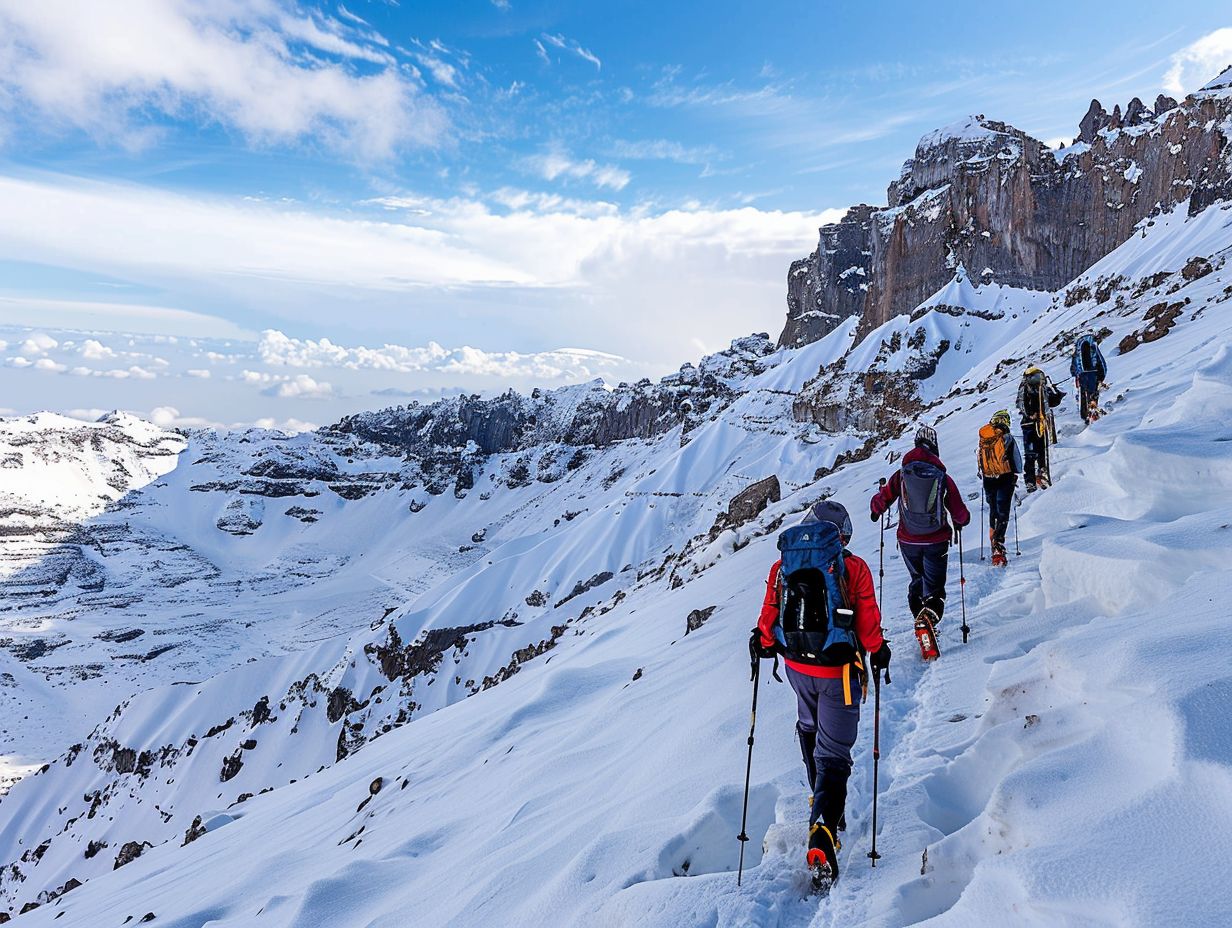
- Climbing Kilimanjaro requires a good level of fitness due to the high altitude, distance, and terrain.
- Recommended fitness level: regular exercise, cardiovascular and strength training, and hiking experience.
- Being physically fit for Kilimanjaro offers benefits such as increased endurance, reduced risk of injury, and better acclimatization to high altitude.
What are the Physical Demands of Climbing Kilimanjaro?
Climbing Kilimanjaro requires a high level of physical fitness and stamina due to the challenging terrain, high altitude, and long trekking distances.
This iconic African peak stands at 19,341 feet, making it the highest free-standing mountain in the world.
The journey to the top demands resilience in the face of fluctuating temperatures, low oxygen levels, and rugged paths.
Altitude sickness is a genuine concern, as climbers must acclimatize properly to avoid its debilitating effects.
This adventure demands not only physical strength but also mental fortitude. Determination and perseverance are essential to push through uphill climbs and rocky terrains.
What is the Difficulty Level of Climbing Kilimanjaro?
Climbing Kilimanjaro is considered a challenging endeavor, with varying difficulty levels depending on the chosen route, fitness level of the climber, and proper route planning.
Climbers should be able to withstand long hours of hiking at high altitudes and cope with changing weather conditions.
Physical fitness plays a crucial role in tackling the steep ascents and descents.
Choosing the right route is essential as some paths are more demanding than others.
- Proper route selection based on experience and physical abilities is pivotal.
- Failure to match the route with your fitness can lead to exhaustion and even altitude sickness.
What is the Distance and Duration of the Hike?
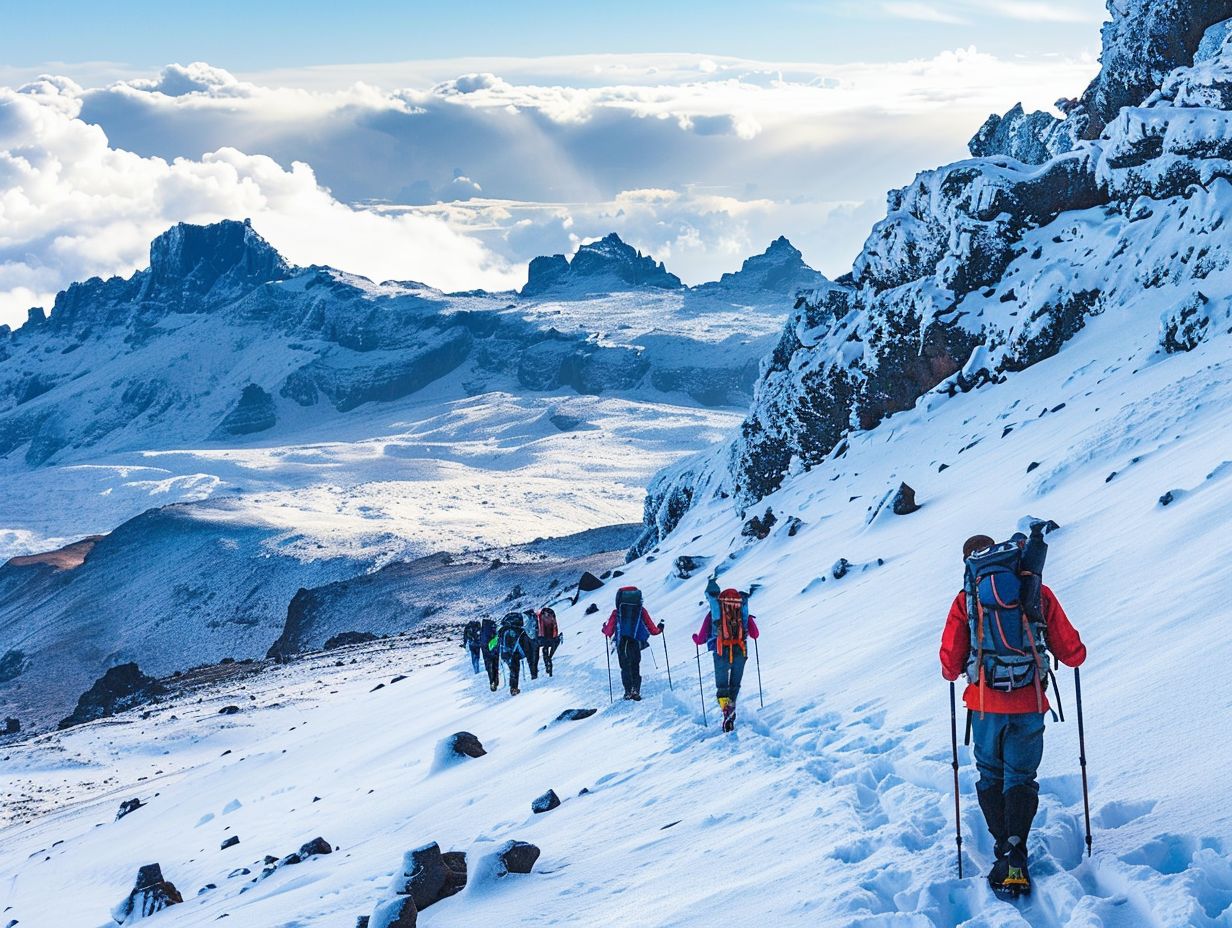
The distance and duration of a Kilimanjaro hike can vary depending on the chosen route, with treks typically lasting between 5 to 9 days.
For example, the popular Marangu route is known for its shorter duration, usually lasting around 5 to 6 days, making it a good option.
On the other hand, the longer Lemosho or Machame routes often span 7 to 9 days, allowing for a more gradual acclimatization process.
Each trail offers unique perspectives of the stunning landscapes, from lush rainforests to barren alpine deserts, adding to the allure and challenge.
What is the Terrain Like?
The terrain on Kilimanjaro is diverse, ranging from lush rainforests at the base to rocky mountain scree slopes as climbers approach the summit, offering a challenging yet rewarding trekking experience.
As climbers ascend further, they transition from the dense vegetation of the rainforest to the open alpine desert zone.
The transition through moorlands with unique plant life to the barren lunar landscape above the cloud line is stark and breathtaking.
The mountain scree slopes pose a unique challenge with loose rock and gravel, making each step a test of balance and stamina.
Climbers need to navigate carefully to avoid slipping and sustaining injuries.
These rugged slopes demand mental focus and physical strength, adding an element of thrill to the ascent.
What is the Altitude Sickness Risk?
Altitude sickness is a significant risk due to the rapid altitude gain, emphasizing the importance of proper acclimatization, safety measures, and awareness of altitude-related health issues.
Acute mountain sickness (AMS), a common form of altitude sickness, can range from mild symptoms like headache and dizziness to more severe conditions such as High-Altitude Pulmonary Edema (HAPE) and High-Altitude Cerebral Edema (HACE).
These conditions can be life-threatening if not addressed promptly.
It is crucial for climbers to follow a gradual ascent schedule, allowing their bodies to acclimatize to the changing altitude levels.
Hydration, nutrition, and adequate rest are vital components of successful acclimatization.
Climbers should pay attention to their bodies and be aware of any signs of altitude sickness, including fatigue, nausea, and shortness of breath.
It is recommended to ascend slowly, taking regular breaks and descending to lower altitudes if symptoms worsen.
Monitoring oxygen saturation levels and heart rate can provide valuable insights into one’s physical condition at high altitudes, allowing for early intervention if needed.
How to Prepare for Climbing Kilimanjaro?
Proper preparation is key for climbing Kilimanjaro, and it involves a combination of physical training, mental readiness, and acquiring the necessary gear and equipment for a successful ascent.
Before starting your Kilimanjaro adventure, prioritize a well-rounded fitness regimen. Include cardiovascular endurance, strength training, and flexibility exercises to build the stamina needed for the trek.
Cultivating a positive mindset through visualization, mental exercises, and staying motivated will play a crucial role in overcoming obstacles during the climb.
As for gear, make sure to invest in high-quality hiking boots, thermal clothing, a reliable backpack, hydration system, and other essential items listed on reputable climbing gear checklists.
What is the Recommended Fitness Level for Climbing Kilimanjaro?
A high level of fitness is recommended for climbing Kilimanjaro, with an emphasis on aerobic exercise, endurance training, and building stamina to cope with the physical demands of the ascent.
Engaging in regular cardiovascular activities like running, cycling, or hiking can greatly improve your aerobic capacity and overall endurance levels.
Incorporating strength training exercises targeting major muscle groups such as squats, lunges, and core workouts is essential to enhance your physical strength and stability.
Interval training, which involves alternating high-intensity bursts of activity with lower intensity periods, can effectively improve your stamina and mental resilience.
What Training Exercises Should You Do?
Training exercises for Kilimanjaro preparation should include hiking, cardio workouts, weight-bearing sets, and gym sessions to improve overall physical conditioning, endurance, and strength, while breaking in hiking boots for comfort and performance.
- Cardio workouts such as running, cycling, or stair climbing are essential for increasing cardiovascular fitness and stamina, helping you endure long hikes and high altitude challenges.
- Strength training focusing on lower body muscles like quads, hamstrings, and calves, coupled with core exercises, will provide the necessary power for ascending steep terrain and carrying a backpack.
- Hiking-specific workouts involving uphill climbs and downhill descents will simulate the actual demands of the Kilimanjaro trek, preparing your body for the varied terrain and weather conditions.
What Gear and Equipment Do You Need to Bring?
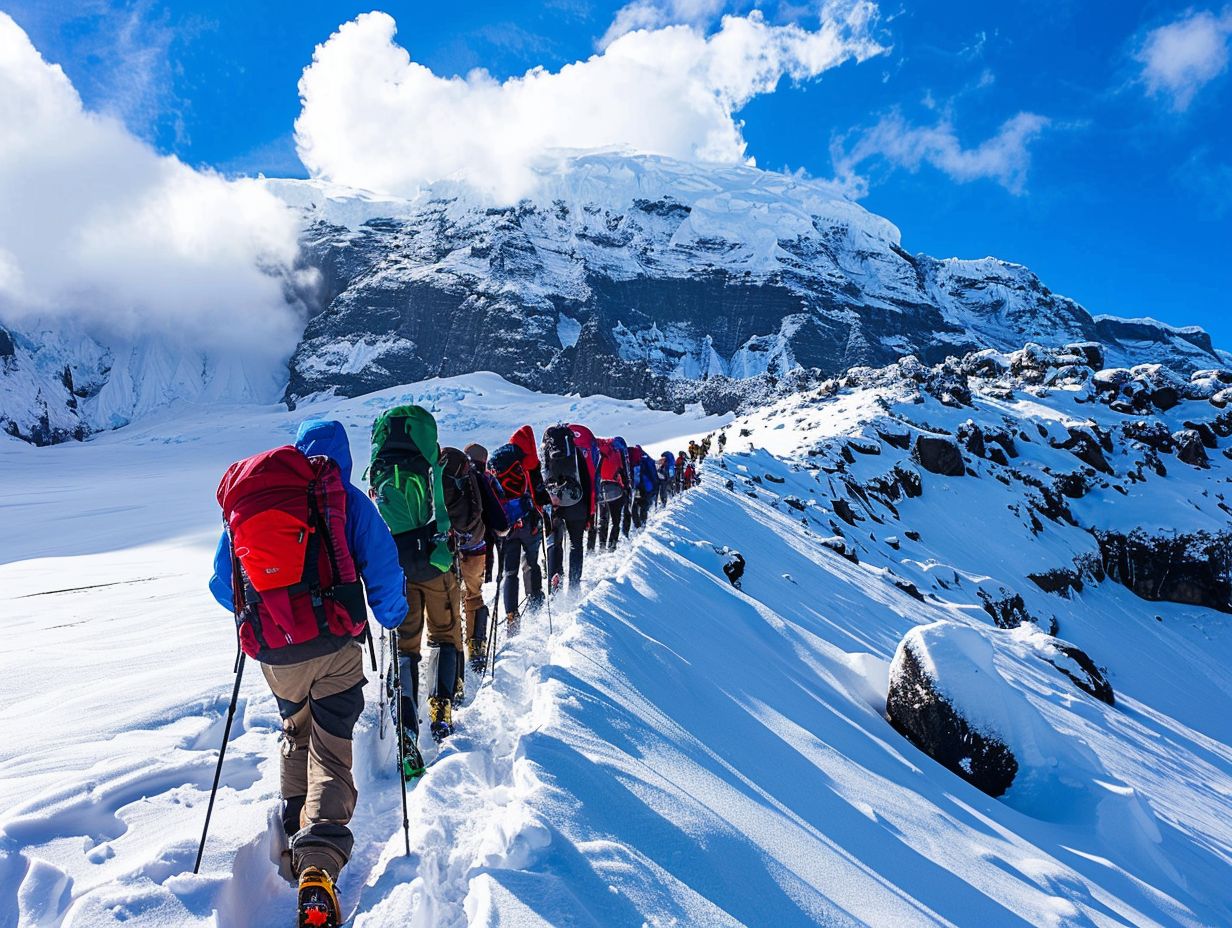
Essential gear for climbing Kilimanjaro includes camping equipment, proper hiking boots, warm clothing, trekking poles, and other necessary items to ensure safety, comfort, and preparedness for the trek.
- Camping equipment which should include a quality tent, sleeping bag suitable for cold conditions, camping stove, and lightweight cookware.
- Layering is crucial in high-altitude environments, so packing versatile clothing that can be easily adjusted based on weather changes is paramount.
- Investing in high-quality hiking boots that provide ankle support and good grip on varied terrains is essential for the ascent.
- Trekking poles can help reduce strain on joints and improve stability, especially during steep climbs.
- Pack essential items like a headlamp, insulated water bottles, a first aid kit, and a sturdy backpack equipped for long hikes in unpredictable weather conditions.
What are the Benefits of Being Fit for Climbing Kilimanjaro?
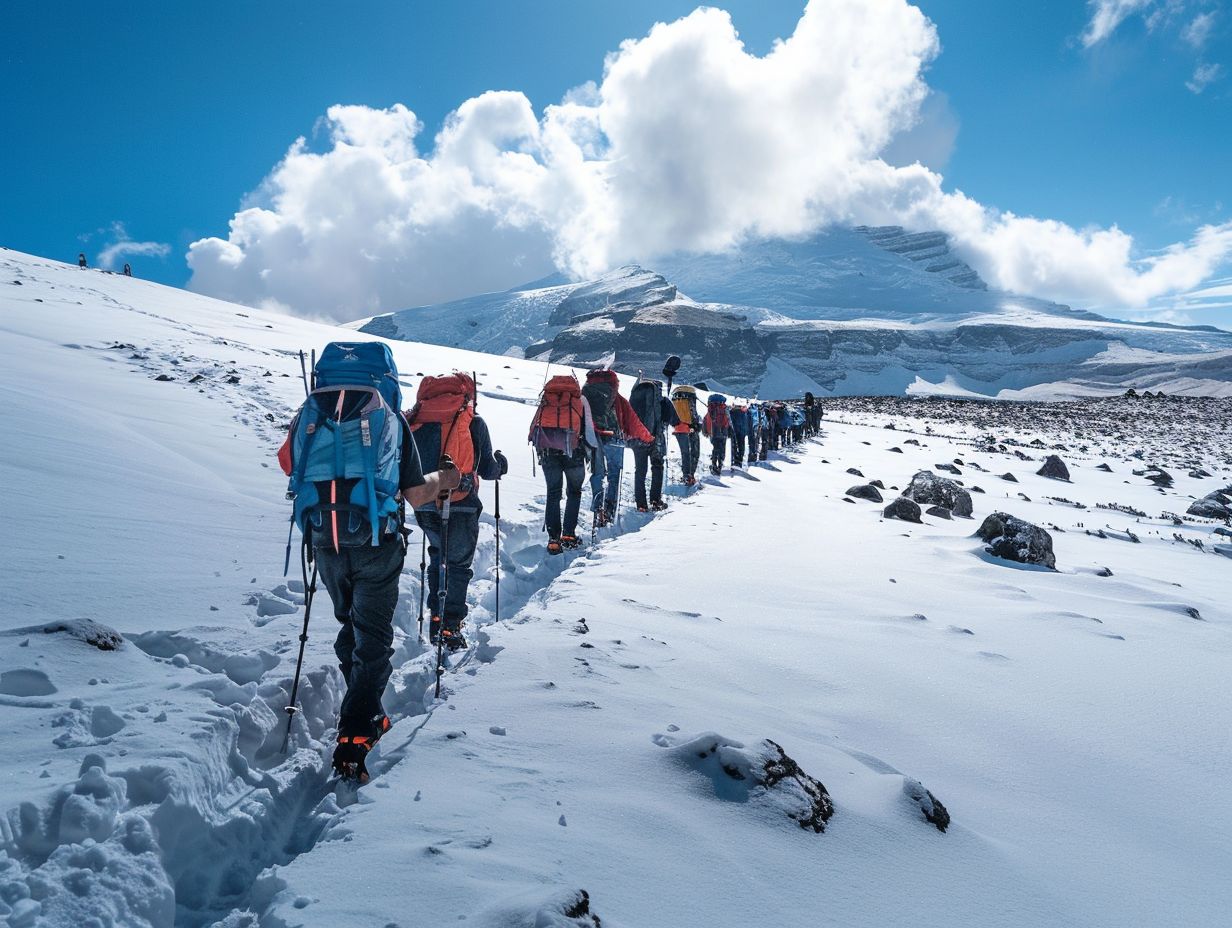
Being fit for climbing Kilimanjaro offers numerous benefits, including increased endurance and stamina, reduced risk of injury, better acclimatization to high altitude, and enhanced enjoyment of the overall journey.
1. Increased Endurance and Stamina
Enhanced endurance and stamina gained through regular exercise and physical activity contribute significantly by enabling climbers to withstand the demanding trekking conditions.
Consistent training prepares the body physically and mentally. The high altitude and unpredictable weather on Kilimanjaro require a strong physical foundation.
Engaging in cardiovascular workouts, strength training, and hiking on diverse terrains helps climbers build endurance for long hours of trekking and steep ascents.
Maintaining overall stamina through a balanced diet and proper hydration is crucial for sustaining energy levels throughout the expedition.
2. Reduced Risk of Injury
Maintaining optimal fitness levels reduces the risk of injuries, promoting overall safety and well-being for climbers.
Staying active and strengthening core muscles can enhance balance and stability, crucial for navigating steep slopes and rocky paths.
It is advised to gradually increase endurance through cardio exercises like running or hiking to prepare the body for the demanding journey.
Equally important is familiarizing oneself with proper climbing techniques and safety protocols.
Climbers should always wear appropriate gear, such as sturdy hiking boots with ankle support and helmets, to protect against falls or rocks dislodged by others.
Acclimatizing to the altitude is vital. Climbers should pace themselves, stay hydrated, and heed any signs of altitude sickness.
3. Better Acclimatization to High Altitude
Physical fitness enhances the body’s ability to acclimatize to high altitudes, reducing the likelihood of altitude sickness and promoting a smoother ascent.
When climbers are physically fit, their cardiovascular system is more efficient in delivering oxygen to the body’s tissues, which is crucial at high altitudes where oxygen levels are lower.
This increased oxygen delivery aids in the acclimatization process, helping climbers adjust to the reduced oxygen levels gradually.
Maintaining a good level of physical fitness also supports a healthy respiratory system, allowing climbers to breathe more comfortably in the thin air of high altitudes.
4. Enjoyment of the Journey
Being physically fit enhances the overall enjoyment of the Kilimanjaro climbing experience, allowing climbers to focus on the beauty of the surroundings and the accomplishment of summiting Africa’s highest peak.
Maintaining a good level of physical fitness ensures that you can conquer the challenging terrain and keeps you energized to admire the breathtaking views.
Preparation is key before embarking on this adventure; regular cardio exercises, strength training, and hiking practice can significantly boost your stamina and endurance for the climb.
A positive mental attitude plays a crucial role in overcoming obstacles and pushing through tough moments during the ascent.
It cultivates resilience and determination, helping you stay motivated and focused on reaching each milestone on the path to the summit.
Frequently Asked Questions
1. How Fit Do You Need To Be To Climb Kilimanjaro?
A: In order to climb Kilimanjaro, you need to have a good level of physical fitness. The climb is challenging and requires stamina, endurance and strength.
2. What kind of physical fitness is required to climb Kilimanjaro?
A: You should have a good overall level of fitness, as well as strong legs and core muscles. Cardiovascular fitness is also important as the climb involves long days of hiking at high altitude.
3. Do I need to be an experienced climber to climb Kilimanjaro?
A: No, you do not need to be an experienced climber. However, you should have some experience with hiking and be comfortable with camping in rugged conditions.
4. How can I prepare for the physical demands of climbing Kilimanjaro?
A: You should start a training program at least 3-6 months before your climb. This should include exercises for building strength and endurance, as well as high altitude training if possible.
5. What happens if I am not fit enough to complete the climb?
A: If you are not fit enough to continue, the guides will make the decision to turn back for your safety. It is important to listen to their advice and follow their instructions.
6. Are there any age restrictions for climbing Kilimanjaro?
A: There is no upper age limit for climbing Kilimanjaro, but participants must be at least 10 years old. It is recommended that older individuals consult with a doctor before attempting the climb.